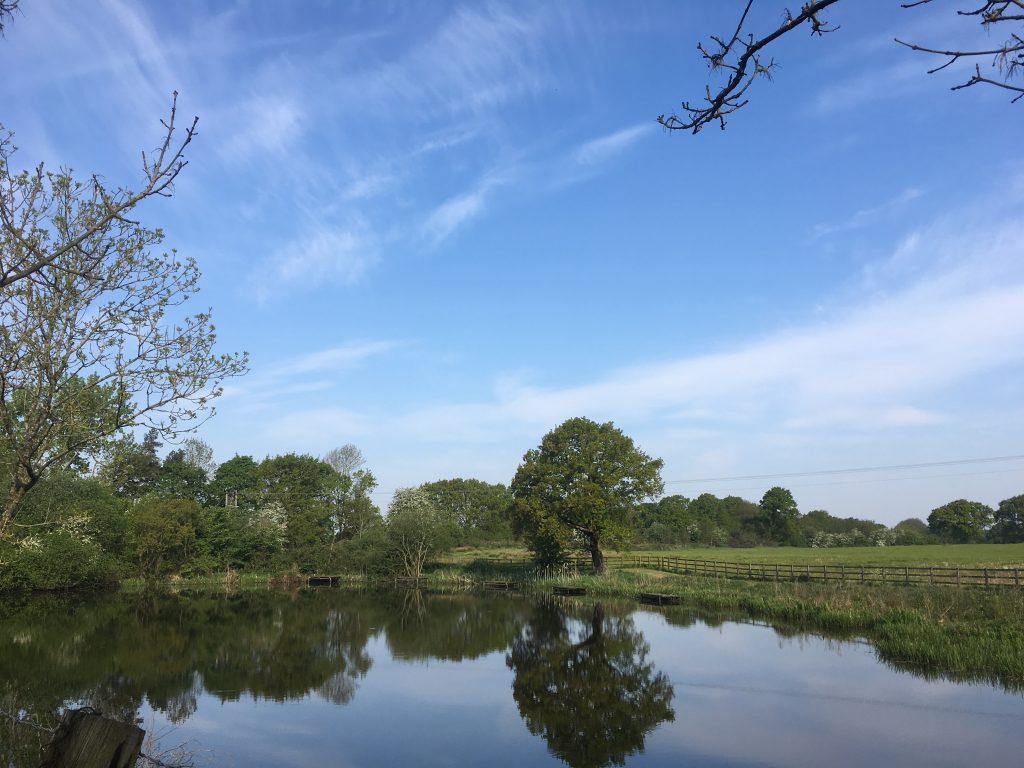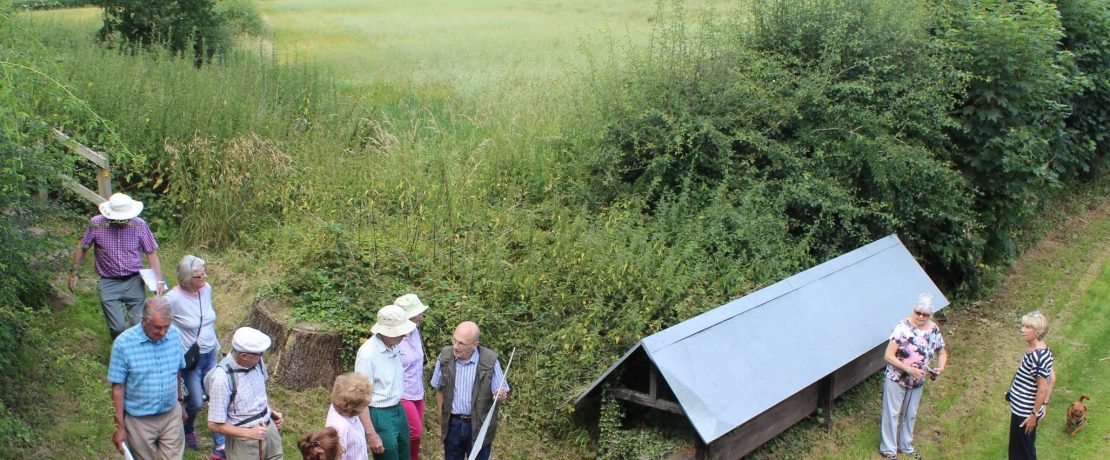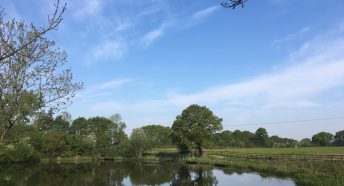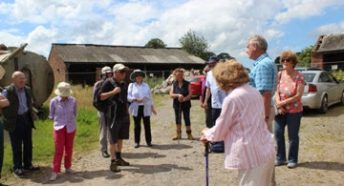HS2: Mid-Cheshire Brinefield route will bring significant challenges
Mid-Cheshire’s settlement history is inextricably linked with its underlying geology, and the distinctive character of our county’s landscapes now illustrates how mankind has taken advantage of the land.
The Cheshire salt beds were laid down around 220 million years ago at a time when the climate was rather warmer, and the rock salt subsequently buried under a layer of impermeable marl, but the salt reached the surface in brine springs in places, leading to the Celtic and subsequent Roman settlement in what is now Middlewich, the site of CPRE Cheshire’s office, near to the confluence of the Dane and the Croco.
The land was also covered in a thick sheet of ice during the most recent ice age, and as this receded it deposited glacial till, forming the soils which became so highly valued for Cheshire’s dairy industry.
Nowadays, rather than evaporating the small quantities of brine collected from the wild springs around the King Street Fault, as the Romans did in Middlewich, controlled brine pumping is practiced at the British Salt works to the south of the town. In the intervening time and even to the present day, Mid-Cheshire’s towns and countryside have been plagued by subsidence issues from poorly constructed mines and uncontrolled brine extraction, and this has led to one of the more attractive features of the local landscape: salt flashes, where the ground has collapsed and filled in with water to create large ponds. The flashes are an obvious indicator of subsidence, but there are also dips and hollows in the local landscape which are not as spectacular, but as they are unstable and still moving, could be hazardous to the infrastructure needed to support high speed rail tracks across the county.
Flashes: a distinctive local landscape type

The Cheshire Landscape Character assessment describes the salt flashes, illustrated by one of the Whatcroft Flashes above, as:
- Large water-bodies created by brine pumping and rock salt mining.
- Surviving features associated with the salt industry – brine cisterns, Lime beds etc and derelict land where industrial structures have been cleared.
- Extremely flat, low-lying topography. Calcareous habitats and a diversity of associated species
- Open, expansive views of the surrounding landscape.
The mined out caverns have been put to good use both for hazardous waste and document storage – and the cavities have an alternative use for storage of gas. Concerns over potential impacts on the latter led to a realignment of the route across Cheshire, meaning that the line would not cross above the proposed storage plant to be run by King Street Energy, which received planning permission in 2009 but has yet to be developed because of the potential impact of HS2.
However, the new route appears to be more problematic than that initially proposed. Compass Minerals, the owners of the Winsford Rock Salt Mine, has taken over 40 core samples, a number of which demonstrate the presence of previously undetected voids across the area which are currently geologically stable but which could quickly collapse if disturbed by heavy engineering works. The route crosses more of the brine field than previously, and a report by TerraConsult (commissioned by Mid-Cheshire Against HS2) states that the route would cost an additional £750 million, as well as creating a ‘high risk’ of collapsing land.
CPRE’s manifesto for the countryside highlights the importance of the beauty and tranquility of the countryside on our doorstep, and a large number of people both from the area use the canals and waterways of the Dane Valley for recreation, be it walking, fishing or canal boating. The Trent and Mersey Canal society has highlighted the blight that will impact a currently tranquil section of the Dane Valley between Middlewich and Northwich by HS2 crossing the canal and Dane flood plain on embankments and viaducts reaching up to 26 metres in height. In addition to the visual impact, carrying the trains elevated far above the land will mean that the consequent noise pollution will have a far greater impact. The ‘extremely low-lying, flat topography’ which is a feature of the Mid-Cheshire landscape is especially vulnerable to the visual and auditory blight of the proposed concrete viaducts and embankments that will take the train across Mid-Cheshire.
The realigned route if it goes ahead in its current form will cross the Trent and Mersey three times as the canal meanders across the Cheshire Plain, and will require a vastly increased amount of infill material, meaning many more lorry movements during construction. In addition to that, it will require the realignment of major roads in the area, exacerbating traffic issues in an area already plagued by jams and regularly gridlocked whenever there is a serious accident on the M6.
The other detrimental impact of the proposed embankments and viaducts is potentially the most serious as, according to TerraConsult’s report, the increased height of the viaduct will put the underlying ground at much greater risk of subsidence.
Major roads realigned
Once it has passed through the settlements at Whatcroft, the new route requires the A556 to be realigned before going on to cut across the Cheshire Showground in Tabley in the area currently used for the equine classes. As well as the land take, there would be a significant impact through the construction period. Instead of using a cutting to minimise the visual and auditory impact of the development, as was originally proposed, the realigned line would be on an embankment of 3-6 metres in height. Nationally, CPRE is in general in favour of increasing rail capacity, and has not opposed the development of HS2, preferring to influence the route of the line so as to minimise the impact on the countryside. The consultation on the realigned route closed on March 9th. Although this article focuses mainly on the impact to the realignment in the Mid-Cheshire area, HS2 would have an effect in a number of other parts of the county.
A CPRE Cheshire Branch member sent the following letter to Cheshire West and Chester Council, highlighting the concerns of many local residents:
“I am fully aware that there are grave concerns from numerous quarters, both political and non political, about the scheme. However I am not convinced that these voices are being adequately heard. Specifically in Mid Cheshire there remain many unanswered questions as to the viability of the scheme. The latest changes, announced recently, still fail to address what could be quite catastrophic implications of constructing and operating a high speed line in close proximity to under ground gas storage and over geologically fragile land. If a serious incident where to ever occur during construction or operation then the line would essentially be severed north of Crewe with no possibility of reopening or rerouting it.
The construction of this line will devastate the economies of Mid Cheshire towns that are in its path. People operating local businesses, which the towns are dependent on, will find it impossible maintain profits in such a severely disrupted climate. Basically closing and realigning the 556 through Northwich will cut off a major artery into the town with no hope of anything beneficial coming to the town from the line itself. I wonder whether the council have enquired about impact assessments on the Mid Cheshire area as a result of this project or whether they even exist. There seems to be processes in place to compensate individuals but in reality they should be compensating whole towns and villages.
The existence of such a enormously expensive line could lead to a situation where the government would be determined to, and indeed would have to, recoup as much money as possible from the British travelling public. If this where to be the case it could lead to a situation that has not been widely discussed. What is there to prevent those of us who are close, but not conveniently close enough, to a hub station, from being compelled to use the line to get further north or south as the more traditional lines are abandoned in favour of HS2. I fear this could be a realistic outcome if HS2 were to go ahead.
These are many of the serious questions that CWAC should be raising with the exponents of HS2. People in Mid Cheshire have legitimate concerns and deserve to be listened to and not fobbed off, by what an increasing number of people, nationwide, believe to be a vanity project, that is financially out of control, and will devastate those in its path.”







